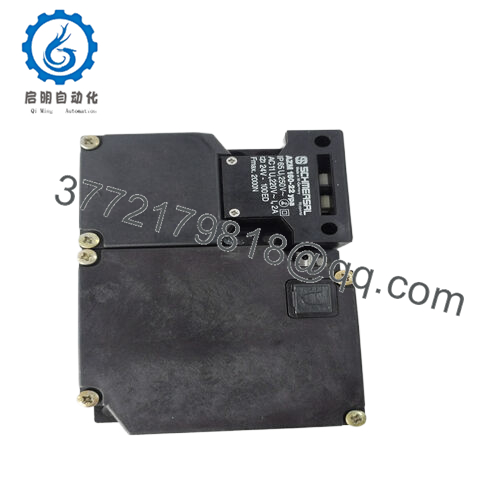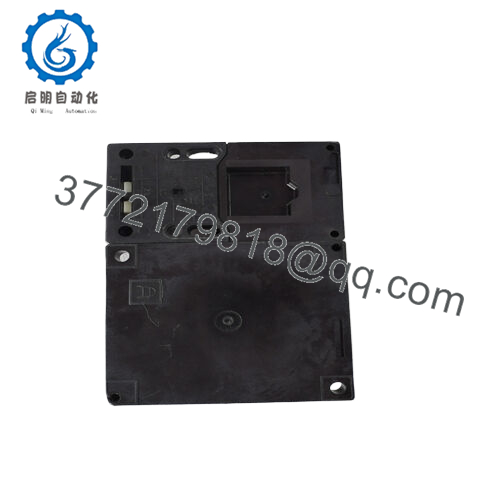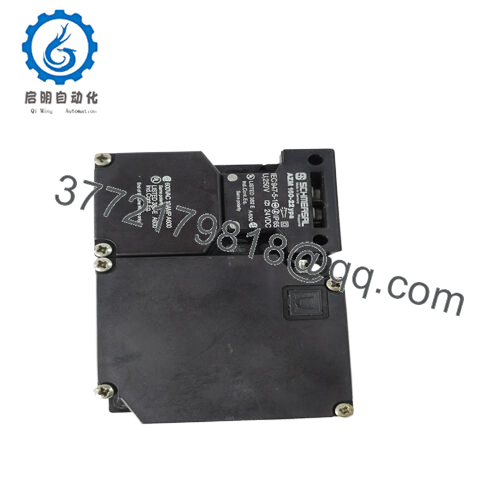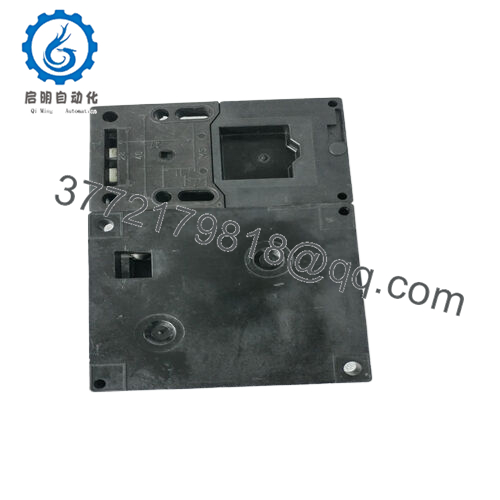Description
In the intricate web of industrial automation, where machine guards must enforce unyielding access control without bottlenecking workflows or introducing failure modes, the persistent issue revolves around balancing operator convenience with ironclad safety protocols. Think of a robotic assembly line in automotive manufacturing or a conveyor-fed packaging station in food processing: doors or gates swing open for maintenance or loading, but without a solenoid interlock that latches securely against unintended actuation—while allowing controlled release via actuator signals—operators risk exposure to high-speed mechanisms, or systems grind to a halt from unreliable sensing. Legacy mechanical switches might suffice for low-duty cycles, but they degrade under vibration, dust, or repeated impacts, compromising I/O signal reliability and inviting non-compliance with ISO 13849 or EN ISO 14119 standards in process control environments where high reliability isn’t just a checkbox—it’s the divide between seamless production and hazardous interruptions.
The Schmersal AZM160-22YP confronts this directly as a solenoid latching safety interlock switch, meticulously crafted to secure moveable guards with a 30 N holding force that deters casual overrides yet yields to a 24 VDC pulse for deliberate unlocking. This thermoplastic-housed unit, with its integrated actuator and dual contact sets (one N/O for door status, one changeover for auxiliary signaling), addresses the core pursuit of system stability in safety instrumented functions, ensuring modular integration into PLC or DCS architectures without custom enclosures. In everyday scenarios—like emergency access panels in pharmaceutical cleanrooms or hinged barriers on CNC mills—the Schmersal AZM160-22YP asserts itself as essential, providing IP65-sealed ingress protection against washdowns or particulates, while its robust 2000 N actuation force handles the mechanical stresses of industrial doors without chatter or bounce in I/O signals.
Engineers deploying the Schmersal AZM160-22YP appreciate its consultative edge: the latching mechanism maintains guard position even on power loss, enhancing failsafe behavior in redundant setups, and its plug-in/cable entry options streamline field wiring to cut commissioning time. For retrofits from older key-operated interlocks, it offers actuator compatibility across Schmersal’s AZM series, minimizing engineering tweaks while boosting diagnostic feedback through bimetallic limit switches that flag misalignment or tamper attempts. In high-reliability process control, it transforms guard monitoring from a vulnerability to a virtue—delivering the precise, noise-immune contacts that let safety logic execute flawlessly, safeguarding personnel without sacrificing throughput in the relentless rhythm of automated operations.
- AZM160-22YP
The Schmersal AZM160-22YP functions as a frontline enforcer in the safety I/O layer, mounting rigidly to fixed frames while its actuator tongue engages the moveable guard, completing the circuit only when fully inserted and latched. Upon receiving a 24 VDC solenoid energize from a safety relay or PLC output—drawing just 1.2 A in a 20 ms pulse—the internal plunger retracts to unlatch, enabling door opening while the N/O contact opens to de-energize downstream machinery via the control circuit. The changeover contact, with double-break silver alloy points rated for 10 A thermal loads, provides versatile signaling: one pole for guard-closed confirmation, the other for trap-free monitoring of auxiliary states like e-stop integration, all debounced to prevent false triggers from minor deflections.
In the broader automation stack, the Schmersal AZM160-22YP interfaces downstream of safety controllers—pairing with devices like Pilz PNOZ or Siemens ET 200SP via standard M12 connectors or PG glands—positioned at entry points to halt motion commands until re-latched. It supports diagnostics through optional Zb coding (unique actuator profiles to thwart bypasses) and fault-tolerant redundancy when ganged in series for catenary guarding, upholding PL e / SIL 3 via EN ISO 14119 Type 4 classification. No backplane needed; its self-extinguishing glass-fiber thermoplastic enclosure (UL 94 V-0) thrives in back-of-panel or exposed setups, with 2 plug-in and 2 cable entries for flexible routing that minimizes EMI pickup on long runs. Status is overt: the solenoid’s audible click confirms engagement, while contact telemetry feeds into SCADA for trend analysis of cycle counts or wear.
This adaptive design excels in modular architectures, where multiples chain for perimeter fencing without signal degradation, and its 360° actuator orientation accommodates awkward alignments. For the engineer eyeing deployment, it’s the pragmatic interlock that anticipates real-world frictions—like thermal expansion in steel frames—ensuring your safety envelope closes with mechanical grace, not grudging force, and integrates as effortlessly as it safeguards.
| Specification | Details |
|---|---|
| Model Number | AZM160-22YP |
| Brand | Schmersal |
| Type | Solenoid Latching Safety Interlock Switch |
| Input Voltage | 24 VDC (solenoid) |
| Operating Temp Range | -25 °C to +60 °C |
| Mounting Style | 4 x M6 Holes, Fixed/Moveable Guard |
| Dimensions | 190 x 55 x 37 mm (H x W x D) |
| Weight | 0.46 kg |
| Interface/Bus | 2 N/O + 1 Changeover Contacts, M12/PG Entries |
| Compliance | EN ISO 13849-1 PL e, EN ISO 14119 Type 4, CE, cULus |
| Supported Protocols | Direct Wiring, Safety Relay Compatible |
| Typical Power Draw | 1.2 A (solenoid pulse) |
Incorporating the Schmersal AZM160-22YP yields a tangible uplift in guard integrity that permeates your automation reliability, where its latching solenoid ensures doors stay put during power transients—averting the inadvertent accesses that cascade into stoppages or injuries—and sustains contact life over 1 million cycles by damping mechanical shock, fostering long-term performance that outlasts phenolic alternatives in dusty mills. This resilience curtails maintenance frequency: the bimetal contacts self-clean minor arcing, while Zb coding deters manipulation without tools, streamlining audits under ISO 13849 and freeing compliance teams from constant verifications.
Performance consistency manifests in vibration-heavy realms, holding latching force steady across 5-500 Hz spectra to keep I/O signals crisp amid conveyor jolts, so your e-stops or light curtains trigger without hysteresis—reducing nuisance faults that erode operator trust. Integration eases the path too; its universal actuator mates with legacy tongues sans adapters, slashing engineering overhead for line extensions and enabling hot-swap testing during shifts, all while its IP65 seal withstands hose-downs that would foul lesser units. Engineered for the deployer’s mindset, the Schmersal AZM160-22YP anticipates expansions—like adding RFID for keyless access—delivering an interlock that not only complies but conserves, transforming safety from a procedural drag into a productivity enabler with MTBF exceeding 500,000 hours and the subtle efficiencies that let processes pulse uninterrupted.
In automotive press shops, the Schmersal AZM160-22YP secures die-change doors, latching against 2000 N forces from hydraulic rams in oily, high-cycle process control environments, where its solenoid release ensures critical system uptime for rapid tooling swaps without exposing operators to pinch points in PL e-rated safeguarding.
Food and beverage bottling lines deploy the Schmersal AZM160-22YP on access gates to fillers, providing washdown-proof contacts that signal guard status amid steam and splashes, supporting continuous uptime in hygienic zones demanding Type 4 interlocks to prevent contamination during sanitation breaks.
Pharmaceutical tablet presses leverage it for hopper interlocks, integrating changeover signaling for batch traceability in cleanroom airflows, with the Schmersal AZM160-22YP‘s thermoplastic build upholding SIL 3 integrity where vibration from compaction cycles tests lesser switches, minimizing downtime in GMP-compliant operations.
AZM160-12KP – Actuator-equipped variant with emergency release button for manual overrides in maintenance-heavy setups.
AZM200-11ZP – Compact alternative with 700 N holding force for lighter guard applications like small enclosures.
AZM161-02KAP – Enhanced model with RFID coding for defeat-resistant access in high-security zones.
SRB301MC – Compatible safety relay module for pulsed solenoid control and contact monitoring.
AZM160-22KM – Magnetic variant for non-contact sensing in dusty environments like grain silos.
EL-2000 – Guard locking relay add-on for integrating AZM160 series into modular safety PLCs.
AZM190-11ZMK – Door handle-integrated sibling for ergonomic panel access in operator consoles.
RSS260 – Remote solenoid driver for extending AZM160 pulses over longer control runs.
When preparing to mount the Schmersal AZM160-22YP, align the base to your guard frame using the M6 holes with 4 Nm torque to counter 2000 N loads, and verify actuator insertion depth exceeds 8 mm for full latching—test with a gauge to avoid partial engagement that mimics faults. Check solenoid coil resistance at 20-25 ohms with a DMM powered off, ensuring 24 VDC supply holds ±10% under pulse to prevent weak releases, and route cables through PG11 entries with shielded pairs if runs top 10 m to mute EMI. Ground the enclosure to PE per EN 60204-1, and leave 20 mm clearance around the actuator path for swing without binding, especially in thermal-variable spots nearing 60 °C.
Ongoing maintenance hinges on targeted inspections that preserve efficacy without excess effort. Monthly, cycle the solenoid 10 times under load—listen for consistent clunks and probe contacts for <50 mΩ resistance—to spot coil heating or oxide buildup, remedying with a dry wipe if arcs exceed 5 V drop. Quarterly, in active lines, perform a bypass test per ISO 14119: attempt override with a probe and confirm machine halt, logging contact bounce times under 10 ms for PL e dossiers. For sites with lubricants or corrosives, inspect the thermoplastic shell semiannually for cracks—replace if propagation starts—and clean actuator slots with compressed air, depowered to reset any stuck plungers. Actuator wear? Track cycles via PLC counters; swap at 500,000 if degradation shows in hold tests. This pragmatic schedule, attuned to duty cycles, equips your team to sustain the Schmersal AZM160-22YP‘s vigilance, forestalling wear before it frays your safety net.





 WhatsApp: +86 16626708626
WhatsApp: +86 16626708626 Email:
Email:  Phone: +86 16626708626
Phone: +86 16626708626


